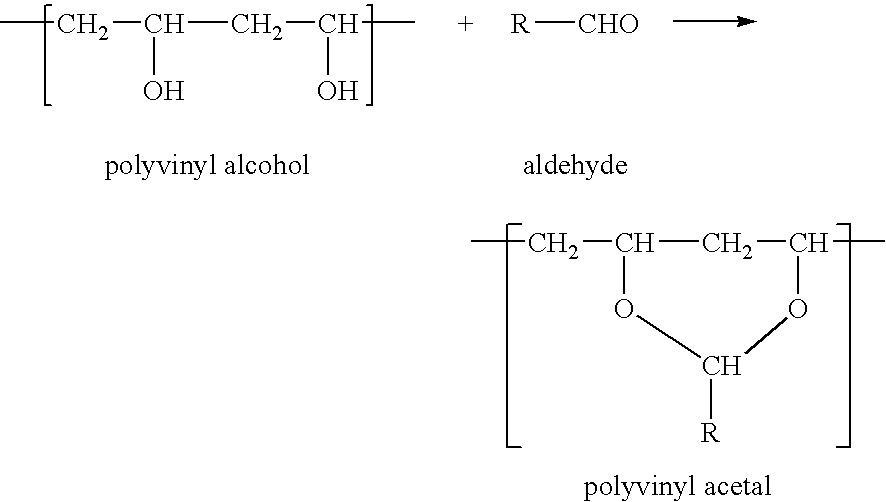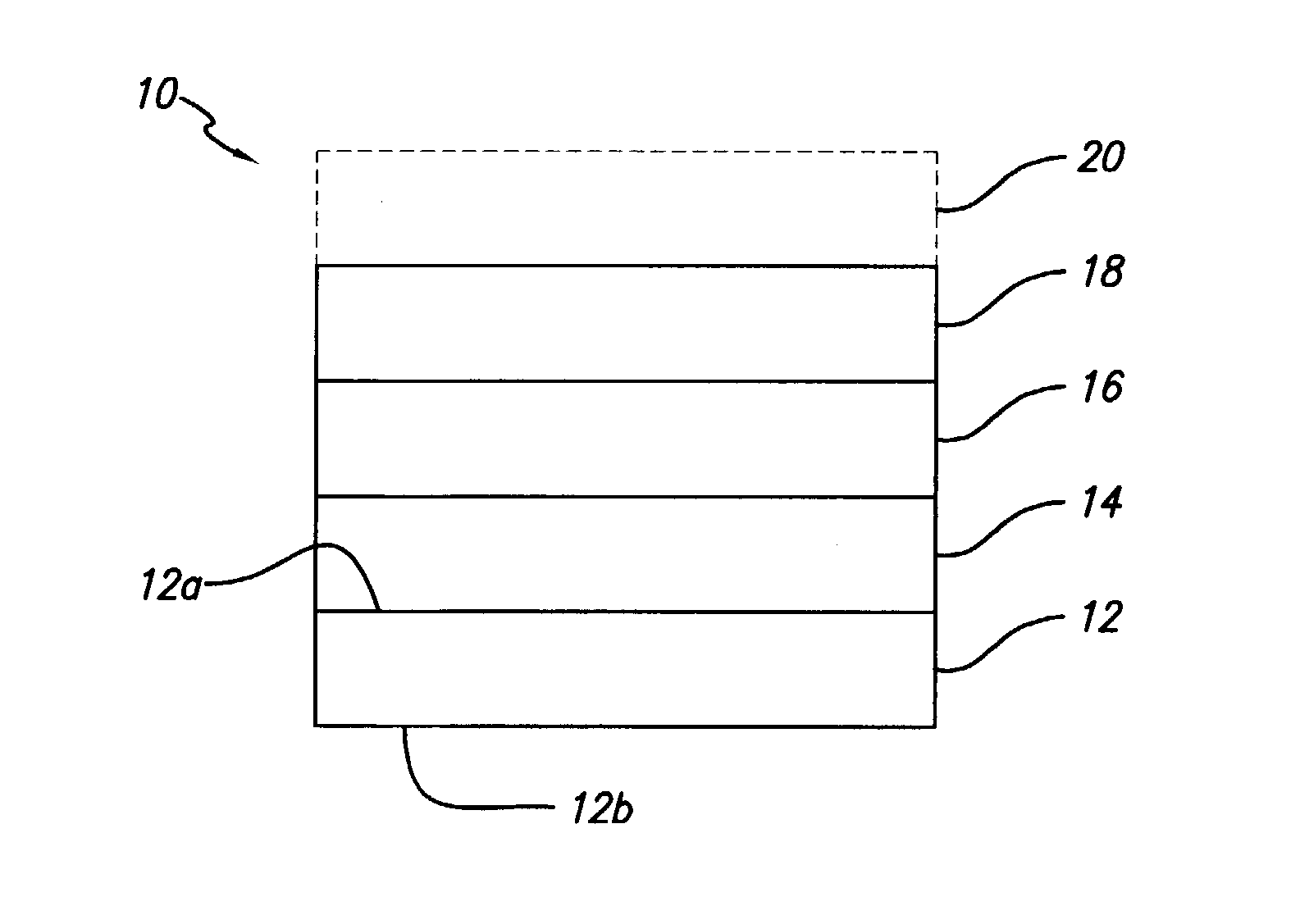Binder to improve light fastness for inkjet photo media
a technology of inkjet photo media and binders, which is applied in the direction of printing, duplicating/marking methods, coatings, etc., can solve the problems of not being able to provide the best solution to date, and achieve the effect of improving both light fastness and humid fastness
- Summary
- Abstract
- Description
- Claims
- Application Information
AI Technical Summary
Benefits of technology
Problems solved by technology
Method used
Image
Examples
example 1
[0032] Polyvinyl Acetal Layer under Ink-Receiving Layer.
[0033] A photo media was prepared, comprising (a) a substrate comprising photobase paper, an underlayer 14 comprising the composition listed in Table I below, a supporting layer 16 comprising water-soluble polyvinyl acetal copolymer (100%), and an image layer (ink-receiving layer) 18 comprising the composition listed in Table II below. The undercoat layer and the image layer were coated at the coating weights (g / m.sup.2) noted.
1TABLE I Composition of Underlayer 14. Component wt % Gelatin 53.2 Glycerol 2.2 Triton X-100 0.2 Mowiol 2688 44.3 Hardener OB1207 0.1 Coating weight 10 gsm
[0034] With regard to underlayer 14, the gelatin was photo-grade gelatin and obtained from DGF (Germany). Both Triton X-100 (a surfactant) and glycerol were obtained from Aldrich Chemicals (Milwaukee, Wis.). Mowiol 2688 is a polyvinyl alcohol and was obtained from Clariant Corporation (Charlotte, N.C.). Hardener OB1207, a pyridine-type hardener, was ob...
example 2a
Partial Replacement of Polyvinyl Alcohol in Ink-Receiving Layer with Polyvinyl Acetal.
[0042] In this example, 25 wt % polyvinyl (WO-320R) was replaced with water-soluble polyvinyl acetal (KW-3). The ink-receiving layer 18 had the composition listed in Table IV below. The substrate 12 and undercoat layer 14 were the same as in Example 1; there was no support layer 16.
4TABLE IV Composition of Ink-Receiving Layer. Component wt % Gelatin 19.21 Cationic polymer 19.21 WO-320R 35.9 Polyvinyl acetal KW-3 12 Culminal MHPC 100 9.60 Glycerol 1.34 Lodyne S107B 0.96 Triton X-100 0.39 Surfactant 10G 0.39 Gasil HP 39 1.00 Coating weight 2.6 gsm
[0043] Comparison of light fastness for this combination evidences an improved light fastness over that of an ink-receiving layer having PVOH and no replacement water-soluble polyvinyl acetal.
example 2b
Partial Replacement of Polyvinyl Alcohol in Ink-Receiving Layer with Polyvinyl Acetal.
[0044] In this example, 75 wt % polyvinyl (WO-320R) was replaced with water-soluble polyvinyl acetal (KW-3). The ink-receiving layer 18 had the composition listed in Table V below. The substrate 12 and undercoat layer 14 were the same as in Example 1; there was no support layer 16.
5TABLE V Composition of Ink-Receiving Layer. Component wt % Gelatin 19.21 Cationic polymer 19.21 WO-320R 12 Polyvinyl acetal KW-3 35.9 Culminal MHPC 100 9.60 Glycerol 1.34 Lodyne S107B 0.96 Triton X-100 0.39 Surfactant 10G 0.39 Gasil HP 39 1.00 Coating weight 2.6 gsm
[0045] Comparison of light fastness for this combination evidences an improved light fastness over that of an ink-receiving layer having PVOH and no replacement water-soluble polyvinyl acetal.
PUM
| Property | Measurement | Unit |
|---|---|---|
| Fraction | aaaaa | aaaaa |
| Fraction | aaaaa | aaaaa |
| Fraction | aaaaa | aaaaa |
Abstract
Description
Claims
Application Information
 Login to View More
Login to View More - R&D
- Intellectual Property
- Life Sciences
- Materials
- Tech Scout
- Unparalleled Data Quality
- Higher Quality Content
- 60% Fewer Hallucinations
Browse by: Latest US Patents, China's latest patents, Technical Efficacy Thesaurus, Application Domain, Technology Topic, Popular Technical Reports.
© 2025 PatSnap. All rights reserved.Legal|Privacy policy|Modern Slavery Act Transparency Statement|Sitemap|About US| Contact US: help@patsnap.com



